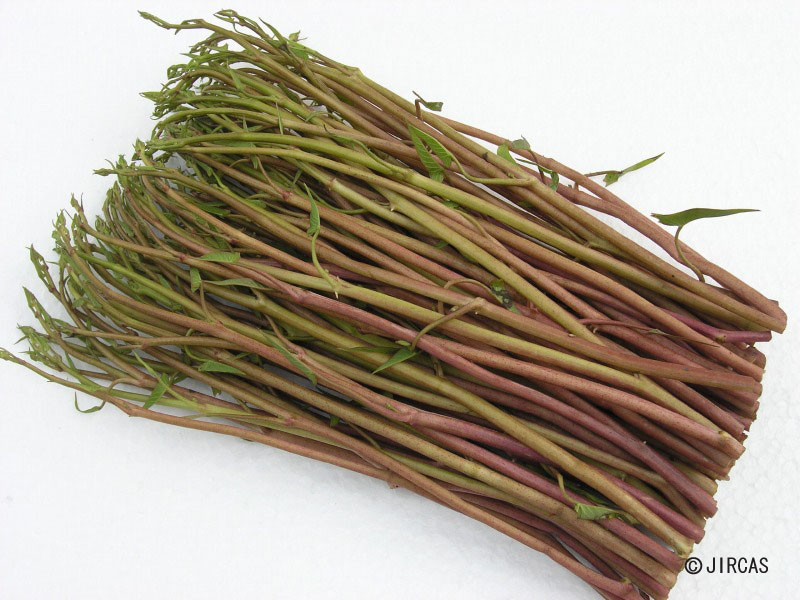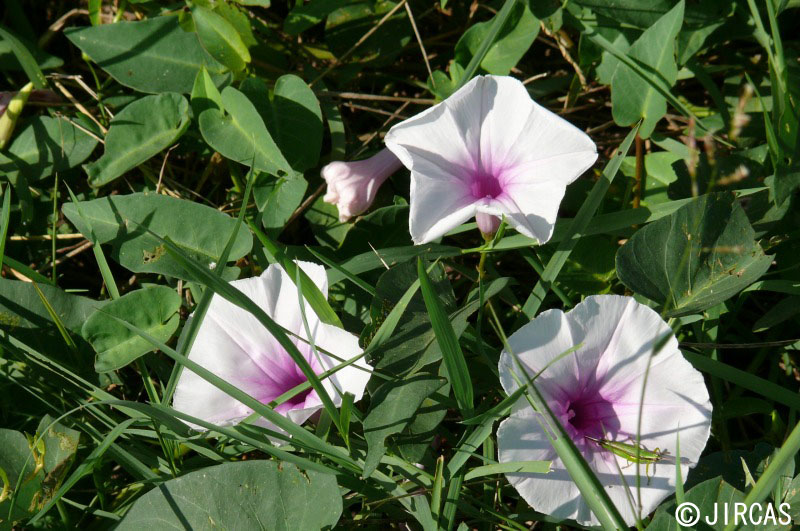Ipomoea aquatica Forsskal (Convolvulaceae)
- Scientific name
- Ipomoea aquatica Forsskal
- Family name
- Convolvulaceae
- Common name
- Water spinach (English); yosai, kushinsai (Japanese)
- Local name
- Phakbung
Annual or perennial, fast-growing herb. Stems smooth, succulent, hollow, creeping in wet places or floating. Leaves alternate, simple, long-petioled, triangular or lanceolate, 5–15 × 1–10 cm, base heart-shaped or hastate. Flowers solitary or clustered 2–7 in the leaf axil, funnel-form, c. 5 cm wide, white with magenta or purple throat, or pink, lavender, or purple. Calyx 5, fused at base. Corolla 5, fused almost the entire length. Stamens 5. Ovary superior, 4-carpelled. Fruit an ovoid capsule, dehiscent, 7–9 mm wide, smooth, brown, enclosed by persistent calyx lobe, containing 2–4 seeds. Seeds angular to rounded, smooth or velvet, 4 mm long, black or light to dark brown.
Common in consistently wet and sunny habitats, from near sea level to an elevation of 1,500 m a.s.l. Easily propagated by stem cutting and planted along canal or pond edges.
Young shoots are harvested year-round and eaten raw as a side dish, fried, or cooked in curry dishes. Phat phakbung fai daeng (flash-fried water spinach) is a popular dish in Thailand.
Young shoots are harvested year-round and eaten raw as a side dish, fried, or cooked in curry dishes. Phat phakbung fai daeng (flash-fried water spinach) is a popular dish in Thailand.





